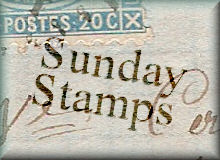
This is a 1912 advertising postcard from The Puffer-Hubbard Mfg. Co., Minneapolis, Minn. It advertises the Minneapolis Panel Silo with steel ribs, "The Strongest and Best Silo made." The name of the farm is stamped lightly in red on the left side of the picture:
View of L. Kennedy & SonsBarn & Silo
Nelson, Wis.
Up-to-Date Farmers
Features of the silo mentioned on the back of this card are that it cannot shrink and fall down, and that it has a smooth inner surface. Some information from the back of another Puffer-Hubbard advertising postcard gives more details:
The hoops of the Minneapolis Panel Silo are carried at a distance from the walls of the silo insuring durability as moisture cannot be withheld so as to cause rust and also providing a perfect ladder at any point of the silo.
The Staging Brackets furnished with every silo attach readily to the hoops, making the use of a large amount of lumber for scaffolding during the erecting unnecessary which means a saving of quite an amount of money.



































